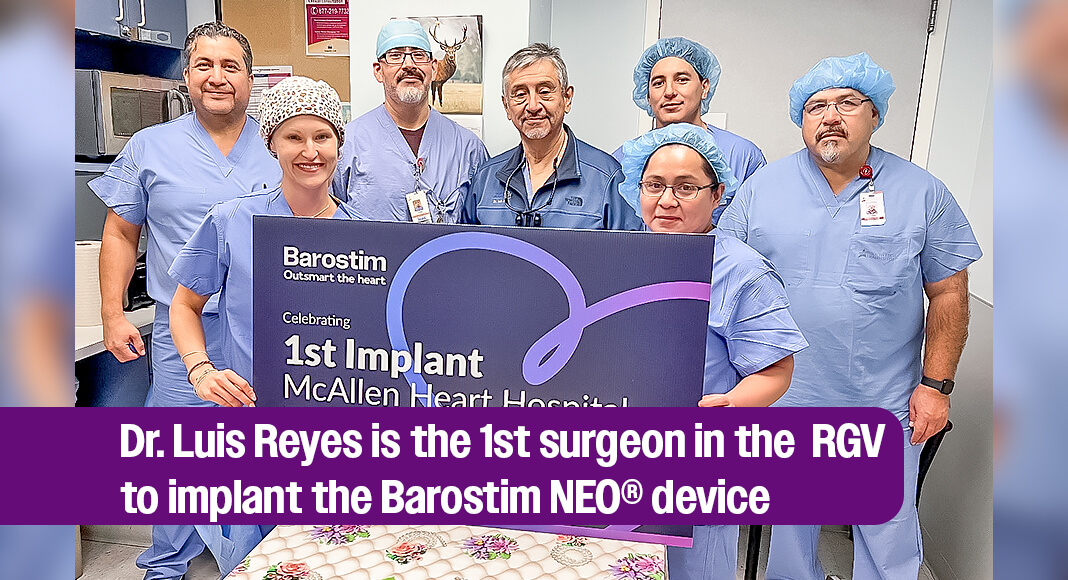
Mega Doctor News
Congestive heart failure is on the rise in the United States, with the prevalence, hospitalizations and mortality affecting younger populations more acutely.
Currently, about 6.7 million Americans aged 20 or older have heart failure, according to the Centers for Disease Control and Prevention, with the lifetime risk of developing the life-threatening condition at approximately 24%.
Heart failure, which develops when the heart can’t pump enough blood and oxygen to support other organs in the body, leading to several physical limitations.
“A weakened heart can significantly impact daily life by causing chronic fatigue, shortness of breath and swelling, which can limit physical and social activities,” says Victor J. Castro, MD, FACC, FACP, a board-certified interventional cardiologist with South Texas Health System Clinics. “The physical symptoms and lifestyle changes associated with heart failure can also have a profound effect on a person’s emotional and social well-being, with the unpredictability of the illness and the fear of sudden symptom worsening or death common, which can trigger anxiety and depression.”
Prompt treatment of heart failure is imperative for slowing disease progression, improving quality of life and extending a patient’s lifespan.
“The risk of death increases significantly with each heart failure-related hospitalization,” says Dr. Castro. “So, early treatment is essential for slowing disease progression, improving quality of life, reduced the risk of hospitalization and extending a patient’s lifespan.”
In the Rio Grande Valley, patients living with heart failure can depend on South Texas Health System Heart for advanced treatment options, including an implantable pacemaker-like device that rebalances the body’s autonomic nervous system to help reduce stress on the heart.
STHS Heart, one of the first freestanding cardiology and cardiovascular hospitals built in the United States, is the first facility in the region to implant the Barostim NEO® System, a U.S. Food and Drug Administration (FDA)-approved electrical stimulator.
The device is implanted under the collarbone with a lead going up to the carotid artery, where it stimulates the heart’s natural blood pressure sensors.
The sensors, called baroreceptors, detect a patient’s blood pressure and send the information to the brain. The brain responds by allowing proper blood pressure to be maintained via relaxing blood vessels, slowing the heart rate and reducing fluid in the body through improved kidney function.
Earlier this month, Dr. Luis Reyes, a board-certified general, vascular and bariatric surgeon affiliated with STHS Heart, performed the first Barostim NEO® implant at the facility on a 57-year-old male patient living with congestive heart failure. He was joined by Dr. Castro, the referring cardiologist, for the milestone procedure.
“STHS Heart is thrilled to bring this new technology to advanced heart failure patients in the Rio Grande Valley,” says Brenda Ivory, Chief Executive Officer, STHS Heart. “The Barostim NEO® implant uses the power of the brain and nervous system to help these patients feel better, be more active and improve their quality of life.”
Barostim NEO® placement requires a minimally invasive procedure under general anesthesia and can be performed as an outpatient procedure. The patients usually go home the same day or the next.
“The device is continuously fine-tuned to provide optimal stimulation to the carotid baroreceptors, which in turn, allows the body to turn off many of the negative signals that impact the heart,” explains Dr. Reyes. “It may be turned on and off by medical personnel following implantation and is even programmable to meet the needs of the individual patient’s unique cardiac health, ultimately helping change the trajectory for advanced heart failure patients. It offers substantial relief to those patients who haven’t been helped by medical therapy or who aren’t candidates for other cardiac devices.”
Barostim NEO® was one of the first therapies to receive the FDA’s Breakthrough Device Designation. This accolade is reserved for distinctive therapies that are meant to treat a life-threatening or irreversibly debilitating disease where there is no available treatment alternative.
To learn more about the comprehensive cardiovascular services available at STHS Heart, including the Barostim NEO®, visit the facility’s website at www.southtexashealthsystemheart.com.










